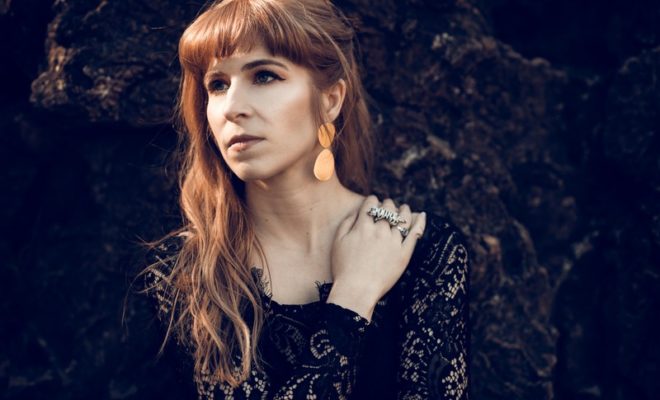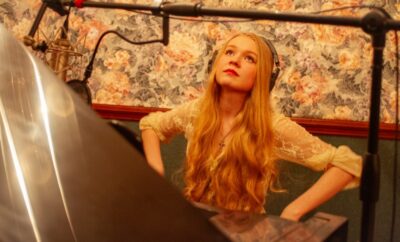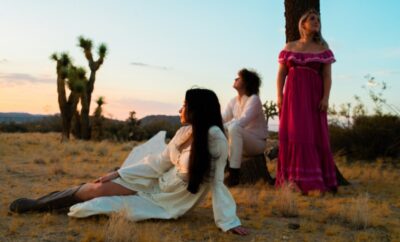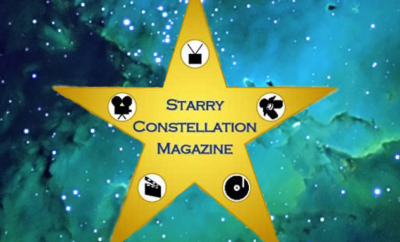
Interviews
Tess Posner – Femme Frequency
By: Lisa Steinberg
Q) How would you describe your sound?
A) Because I like to explore the contrast of darkness and light, I like creating haunting and ethereal sounds, but with elements of hopefulness within it. It’s also an evolving process to tell a story with different kinds of tools. Recently I’ve been inspired to use more acoustic and live instrumentation in my work, whereas in the past I was more drawn to bringing in elements from electronic music. I still love that direction, but as I write more songs, I find new ways to express sonic ideas that draw me into the story and emotions of the song in a different way.
Q) Who are some of your musical influences?
A) Too many to name! Classical music really influenced me early on when I was first learning the piano. Also, recently Joni Mitchell, Radiohead, Labrinth, Bob Dylan and the Beatles.
Q) Talk about the story behind your song “Love You Enough to Change.”
A) I wrote this song about the process of learning how to be vulnerable and breaking through the fear of that. This song is dedicated to that struggle: the parts of us want love, but also want to hide away because we’re afraid that we won’t be loved if they are seen. Love is a funny thing, it can make miracles happen and melt even the thickest ice walls that we’ve built up over time.
Q) How did you come to work on the album Femme Frequency?
A) I first got connected with the founder of Produced by a Girl and was inspired by the mission. After a few months, this project came together for a compilation album with artists in the Produced by a Girl community. For the album each artist wrote songs around the theme dark to light. We communicated those experiences through our individual femme frequency to uplift, heal, challenge, awaken and inspire you.
Q) You also have the song “Party at the End of the World” on the album. What do you think fans of yours connect to with this single?
A) I wrote this song in the middle of fire season in Northern California when I was almost evacuated. It felt very apocalyptic to be in this experience during a pandemic, with so much uncertainty in the future. I ended up blasting music and dancing to release some of the anxious energy and then I wrote this song. The song is playing with the idea of the phoenix, that although everything seems to be burning and collapsing around us, we have to get up and find solutions anyway. Because it’s a dance song, I hope people can feel that energy of catharsis and release that I felt when I wrote it.
Q) It’s made up of five artists and music producers – all female! What does this accomplishment mean to you?
A) Yes! It’s so important, only 2% of music producers are female, which is alarming. I’m really passionate about equity and gender and racial justice, especially in industries like music and technology, which are so important to the future of our society. So, we need a lot more of projects like this and to bring attention to the inequities that persist in these industries. It will take lots of sustained effort not just from women – but also from male allies- to create a truly inclusive and equitable industry.
Q) What is your song writing process? Do you need music before you can create lyrics?
A) It depends on the song, but usually I start with finding the vibe of a song, which usually starts with the idea of what the song is going to be about and the general theme. Sometimes this hits me as a phrase or a word out of nowhere or from journaling. Then, once I have that “seed” I start writing chords, piano and a basic drumbeat. Next, I start to build out the arrangement of the song and how to tell the song’s story through the lyrics and music. Then, I continue to flesh out the vocal melody and the lyrics and bring in additional instruments or sounds to flesh out the arrangement, often collaborating with other artists and producers to bring the song to completion.
Q) How much of hand do you have in the production of your music?
A) I’ve worked with many talented producers in the past and it’s always really rewarding to collaborate with people; the diversity of perspectives add a lot to the final product. Recently, I’ve been learning more of the production side and I’m really enjoying that, I plan on doing a lot more of it on upcoming projects.
Q) What do you hope listeners take away from checking out the Femme Frequency album?
A) All the artists wrote about the theme of darkness to light. I hope that people feel inspired by those themes woven in and the diversity of genres that are represented.
Q) Where are some of your favorite places to perform and what makes those locations so significant to you?
A) I love performing outdoors. It’s really energizing to be surrounded by trees or nature and I think brings in a different energy to the performance, a sense of expansiveness and beauty to go along with the music.
Q) Who would you most like to collaborate with on a song in the future?
A) It would be amazing to collaborate with Banks or Kimbra. I learn so much from their innovative production styles.
Q) What album/band are you currently listening to and why do you dig them?
A) I just discovered Anouar Brahem, who is a master of the oud, an incredible lute-like instrument. His music is so poignant and breathtaking.
Q) You are a part of social media. Why is that such an important way for you to connect with your fans?
A) Social media certainly has its ups and downs, but I do love the ability to connect directly with people from all over the world, which is incredible.
Q) What would you like to say to everyone who is a fan and supporter of you and your work?
A) I am beyond grateful to everyone who has supported this journey. I would not be here without you! You’re amazing!





You must be logged in to post a comment Login